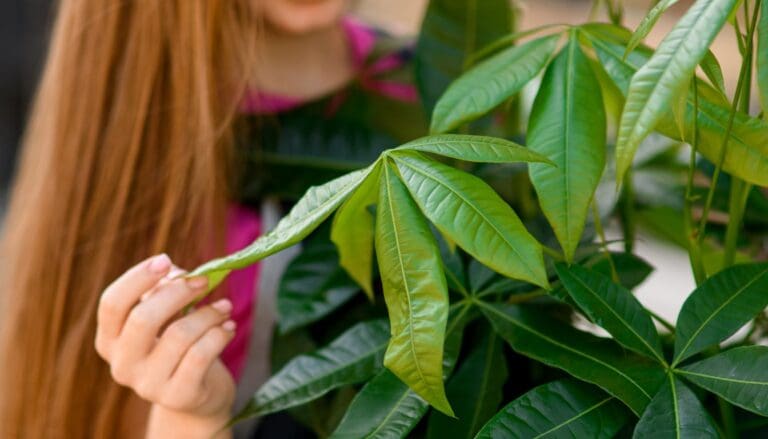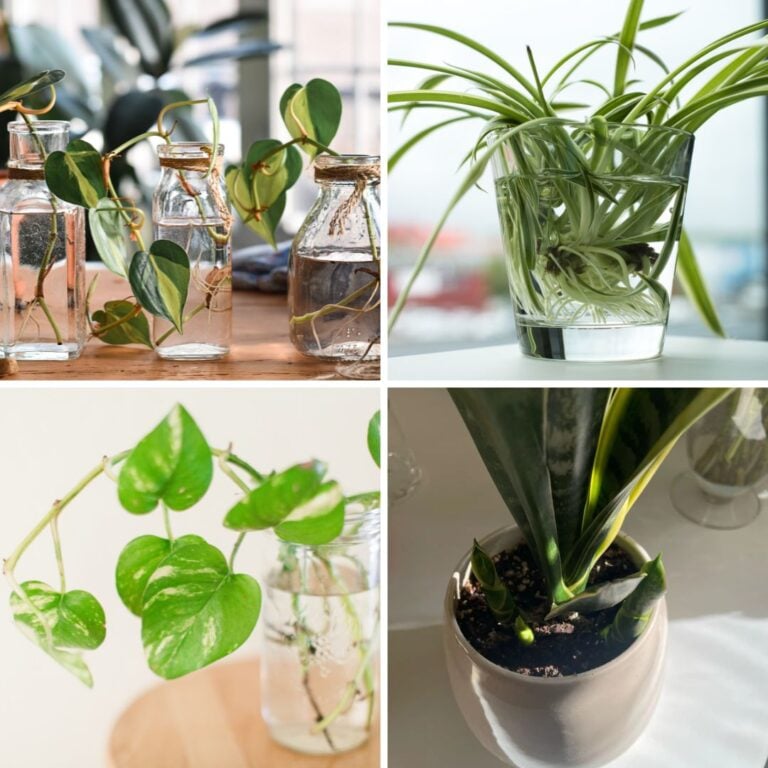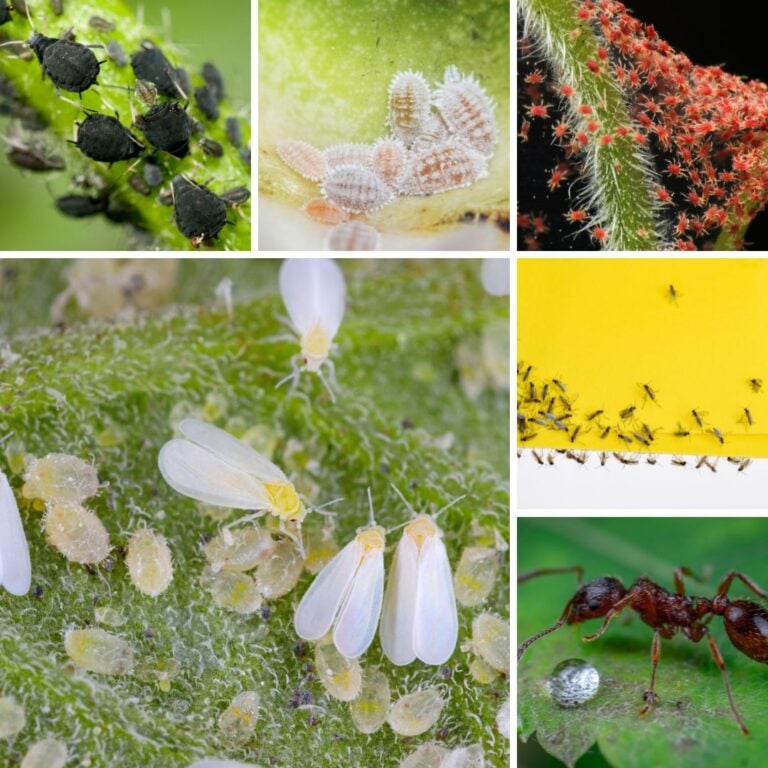10 Best D.I.Y Houseplant Soil Recipes for Thriving Plants
Whenever I think about caring for my houseplants, I know the right potting soil makes all the difference.
Not only does it provide the essential nutrients, but it also ensures that plants get proper drainage and airflow.
Have you ever wondered how to make your own potting soil at home? It’s easier than you think and so rewarding!
I’ve always found making my own soil mixes to be a fun and cost-effective way to keep my plants healthy and happy. 🪴 Plus, I get to choose exactly what goes into the mix, tailoring it to each plant’s specific needs.
Whether you’re a seasoned gardener or just starting out, whipping up your own potting soil can be a game changer. 🌱 What do you think? Let’s get our hands dirty and start mixing!
Please note: Simplify Plants is reader-supported. As an Amazon Associate, I earn from qualifying purchases made by our readers with no extra cost added to you all! Some links in the post are affiliate links and I get a commission from purchases made through links in the post.
1) Compost and Perlite Mix

I love using a compost and perlite mix for my houseplants! It’s one of the easiest DIY recipes out there. The compost provides rich nutrients, while the perlite helps with drainage. 🌱
To make this mix, I usually combine 50% compost with 50% perlite. It’s simple yet effective!
A good quality compost can come from your own backyard or a store. It helps plants grow strong and healthy. Plus, it’s a great way to recycle kitchen scraps!
Perlite is that white, lightweight stuff you often see in potting mixtures. It keeps the soil light and airy, ensuring roots get enough oxygen.
This mix works amazing for most indoor plants. It balances moisture well and prevents overwatering, which is a common issue. Have you ever noticed your plants looking droopy? Overwatering might be the culprit!
Try out this easy soil mix and watch your plants thrive. 🌿 Also, if you’ve got any tips or variations, be sure to drop them in the comments! I’d love to hear your thoughts. 📝
And don’t forget to share your plant pics with us! 📸 Whether you’re a new plant parent or a seasoned pro, everyone can benefit from a good compost and perlite mix.
2) Coco Coir and Worm Castings Blend
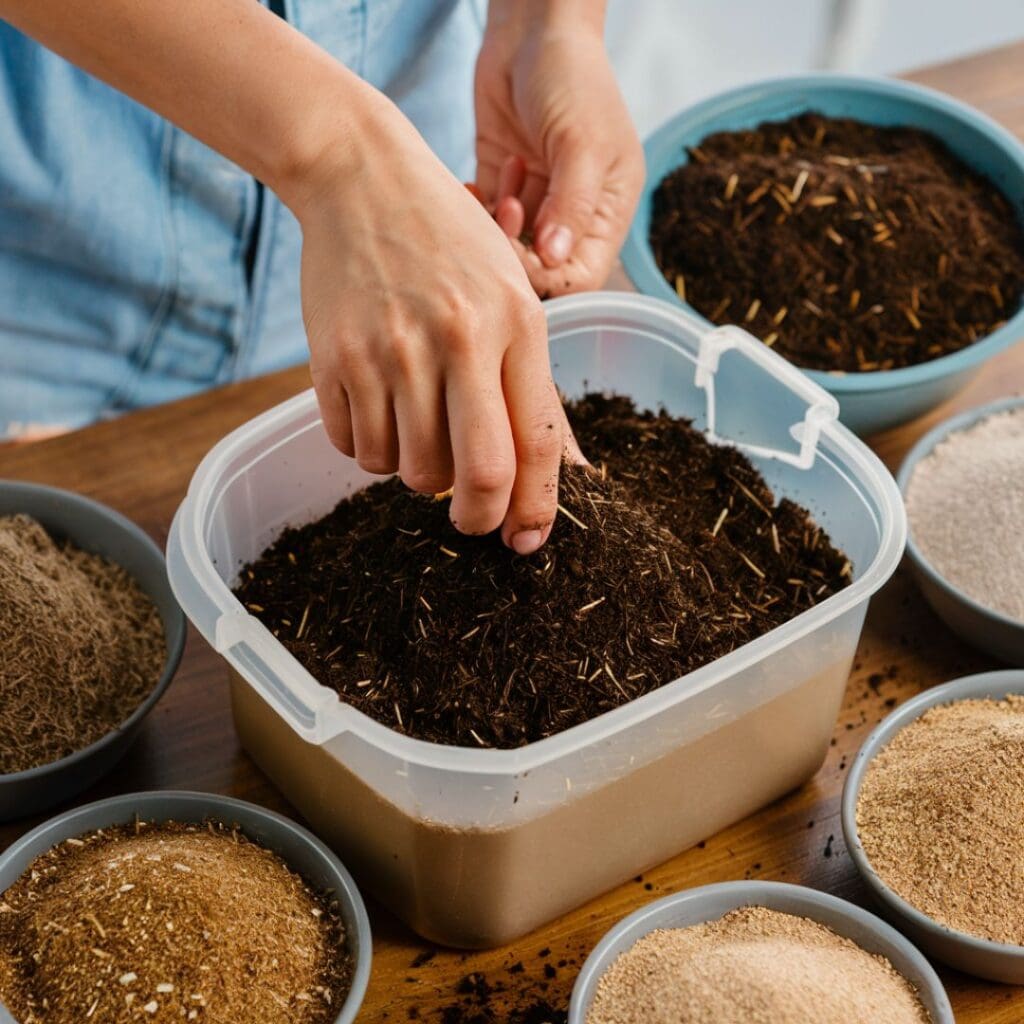
This one is super easy and fun to make. Coco coir, made from coconut husks, is a fantastic ingredient for houseplant soil. It helps with water retention while allowing good drainage. Plus, it’s eco-friendly! 🌱
For this blend, I’ll use 3 parts coco coir as the base. It’s light and airy, perfect for keeping roots happy. 🌴
Next, I’ll add 1 part worm castings. Worm castings are rich in nutrients and help improve soil structure. They can make your plants grow like champs! 🪱💪
To give the mix a bit more structure, I put in 1 part perlite. Perlite is a volcanic rock that keeps the soil from getting too compact.
For every gallon of soil mix, add 1 part of sand. Sand improves drainage, making sure plants don’t sit in water and get root rot.
Finally, I like to sprinkle in a tablespoon of garden lime if I’m using peat moss. It helps to balance out the pH levels. You can use a pH tester to make sure it’s just right.
Mix everything together well in a big container or on a tarp. It’s a bit like baking, but for your plants. 😂
Give this blend a try and let me know how your plants like it. Share your results in the comments! Have any tips or tweaks? Feel free to share! 🌟📝
3) Peat Moss and Vermiculite Combo
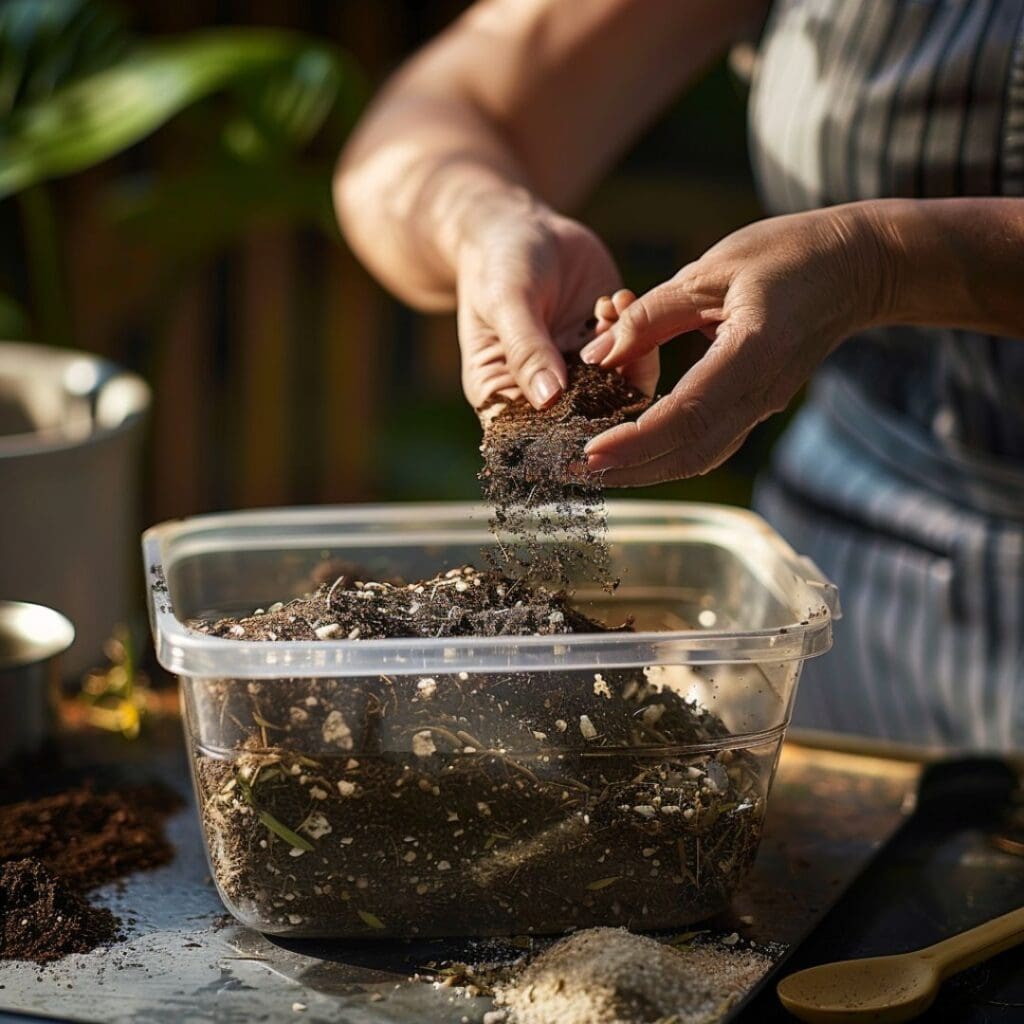
I love a good peat moss and vermiculite combo for my houseplants. This mix is super easy to make and really effective. Peat moss helps retain moisture, which plants love, and vermiculite improves aeration.
To whip up this soil, I combine 2 parts peat moss with 1 part vermiculite. This balance is just perfect for keeping my plants happy and healthy. 🌿
One of the best things about it? It works for almost any indoor plant you have. Whether it’s a fern, a spider plant, or even a tropical plant, they all thrive in this mix.
If your houseplants often dry out or don’t get enough water, this combo is a lifesaver. It holds onto moisture without getting waterlogged. Have you tried this before? Give it a shot and see how your plants thank you! 🍃
Peat moss can sometimes make the soil a little acidic. If your plants prefer more neutral or slightly alkaline soil, consider adding a tiny bit of limestone to balance it out.
Pro tip: Make sure to rehydrate peat moss before using it. It can repel water if it’s too dry, which defeats the purpose of keeping your soil moist.
I always ask myself: what do my plants really need? For most, the peat moss and vermiculite recipe fits perfectly. Have you noticed a difference in your plant’s health with certain soil mixes? Share your experiences! 🌱
4) Charcoal and Orchid Bark Mixture

This is one of my favorite mixtures to use with houseplants. 🌱 Charcoal and orchid bark make a great team, offering both aeration and moisture control. It’s especially useful for orchids and other epiphytic plants.
I typically start with 4 parts orchid bark. Orchid bark is awesome because it allows roots to breathe. Plus, the texture helps prevent compacted soil, which roots hate.
Next, I add 1 part horticultural charcoal. This isn’t the same as the charcoal you’d find in a BBQ grill. Horticultural charcoal is treated to remove any harmful substances. It helps to absorb toxins and keep the soil fresh.
I sometimes throw in a little bit of perlite if I think the mix needs a bit more aeration. A ratio of about 4 parts orchid bark, 2 parts perlite, and 1 part charcoal works wonders. 🌺
One tip: If your plant’s pot doesn’t have drainage holes, extra charcoal at the bottom can absorb excess water. Do you love plants that show off their roots? This mix is perfect for clear pots!
Have you tried this soil mix before? I’d love to hear your thoughts! 💬 Drop a comment below and share your experience. Let’s keep our plants happy and thriving together! 🪴
5) Sand and Garden Soil Combo

This mix is super simple and perfect for those hard-to-please houseplants. You’ll need coarse sand and garden soil. The sand helps with drainage, which prevents root rot. The garden soil provides nutrients.
Mix one part sand with two parts garden soil. It’s that easy! 🌱
If you have heavy clay soil, this combo is a winner. The sand breaks up the clay, making it easier for roots to grow. Just be sure to mix the sand thoroughly into the soil.
This mix works great for succulents and cacti. They love well-draining soil. Do you have any of these plants at home?
Here’s a pro tip: Use horticultural sand. It’s cleaner and has larger grains than regular sand. Your plants will thank you! 🪴
Have you tried mixing sand with your garden soil before? Share your experience in the comments!
6) Cactus Soil with Pumice

Let’s talk about making cactus soil with pumice. This mix is a game-changer for any cactus lover like me. It’s easy to make and perfect for these desert beauties. Ready to get your hands dirty?
First, grab your ingredients. We’ll need potting soil, coarse sand, and pumice. Potting soil holds some water, but not too much. Sand helps with drainage, and pumice is awesome for aeration.
Measure 3 parts potting soil, 2 parts coarse sand, and 1 part pumice. Got it? Great! Mix them together in a clean container. This combination gives your cactus the drainage and airflow it craves.
I love using pumice because it keeps the soil light and airy. Ever had a cactus rot on you? It’s usually because the soil stayed too wet. Pumice helps prevent that by allowing excess water to drain out quickly.
If you’re wondering, “Why coarse sand?” Well, it adds texture and helps prevent compacted soil. Cacti need their roots to breathe, and this mix makes sure they do just that. 🌞
Do you have a favorite ingredient you add to your cactus soil? 🤔 I’d love to hear about it! Drop a comment below and share your tips and experiences. Remember to snap a photo of your DIY cactus soil mix and post it!
7) Organic Potting Mix with Rice Hulls

I love using rice hulls in my potting mix! 🪴 They help make the soil light and fluffy, which is great for plant roots. Have you tried them in your garden yet?
Mixing rice hulls into potting soil boosts drainage and improves soil texture. 🌾 I usually mix 20-30% rice hulls with other organic materials.
For potted plants, the hulls keep the soil from becoming too compacted. This means more oxygen for those roots, helping them grow strong and healthy. 🌱 Plus, it’s a natural and eco-friendly choice.
I find that using rice hulls also helps with water retention. The soil stays moist longer, so I don’t have to water my plants as often. 💧 That’s a win for both me and my plants!
To prepare this mix, I start with good-quality compost. Then, I add rice hulls and some coconut coir or peat moss. It’s that simple!
What are your experiences with rice hulls in your potting mix? Share in the comments below! I’d love to hear tips or funny plant stories. 🌷
8) Pine Bark and Sphagnum Moss Mix

Have you ever tried using pine bark and sphagnum moss for your houseplants? This mix is super beneficial for improving drainage and aeration
I really like using pine bark because it’s long-lasting. It breaks down much slower than other organic materials. This means your soil stays fresh longer, and your plants get consistent nutrients.
Sphagnum moss is another fantastic addition. It’s great for retaining moisture while still allowing excess water to drain away. This keeps the plants’ roots happy and healthy.
This combination works well for many houseplants. The pine bark provides structure so the roots can breathe, while sphagnum moss ensures they don’t dry out too quickly.
Mixing these two ingredients is easy. I usually go for a 1:1 ratio. One part pine bark to one part sphagnum moss. It’s simple but effective!
I found this mix especially good for plants like orchids and ferns. These plants love well-draining soil but also need consistent moisture.
What about you? Have you tried this mix before? Share your experience💬 and any tips you might have! 🌱✨
9) Compost and Sand Blend

Let’s talk about a simple yet effective mix: Compost and Sand Blend. This combination is great for giving your houseplants the nutrients they need while making sure the soil drains well. 🌱
By using 50% compost and 50% coarse sand, you’re creating a balance that keeps your plants happy. 🪴
Compost provides rich organic matter, feeding the plant roots. Sand, on the other hand, ensures that water doesn’t sit around too long, which prevents root rot.
I like to use this blend for my succulents and cacti. These plants love the well-draining nature of sand and appreciate the nutrients from compost. 🏜️ If you’ve ever struggled with keeping these plants alive, give this mix a try! You’ll likely see them thrive.
Sometimes, I’ll even mix in a bit of perlite or pumice. This just adds another layer of drainage goodness! Have you tried something like this before? Drop a comment below and share your experience. 😃
Remember, you don’t have to follow this recipe to the letter. If you have some horticultural charcoal lying around, sprinkle a bit in for improved aeration and pH balance.
Pro tip: Always make sure to use quality compost. Bad compost can have pests or diseases, and we don’t want that! 🐛
So, how’s your plant care journey going? Keep experimenting with your soil mixes and tell me how it goes!
Are you ready to give Compost and Sand Blend a go? This mix has been a game-changer for me, and I bet it could be for you too! Let’s keep our green friends healthy and happy together.
Happy planting! 🌿✨
10) Vermiculite with Leaf Mold

Mixing vermiculite with leaf mold creates an awesome potting mix that your houseplants will love! 🌿
Vermiculite is super lightweight and airy. It helps plants grow strong roots by holding just the right amount of moisture.
Leaf mold is like magic dirt made from decomposed leaves 🍂. It boosts soil health and provides plants with essential nutrients.
I once tried this mix for my spider plant, and the results were fantastic! The plant grew lush and green, with long, spindly leaves that brightened up my living room. Have you ever used vermiculite before?
Making this mix is super easy. Just combine equal parts of vermiculite and leaf mold in a large bowl. That’s it!
If you’ve got succulents, this mix can work wonders for them too. Just be sure to adjust the ratio slightly by adding more leaf mold to improve drainage. 🌵
Do you have a favorite DIY soil recipe? I’d love to hear your thoughts! Drop your comments below and let’s chat about our green thumb adventures! 🌱✨
Understanding Houseplant Soil Basics
Choosing the right soil for houseplants is crucial for their health and growth. Let’s go over soil texture and the common ingredients in houseplant soil to help your plants thrive.
The Importance of Soil Texture
Soil texture is essential because it affects drainage, aeration, and root development. For houseplants, it’s important to have a mix that allows water to drain well while retaining some moisture.
You don’t want the soil to get too compacted, as roots need space and air to breathe.
Imagine planting in heavily compacted soil—it would be like trying to grow in a brick! 🌱
Always aim for a light and fluffy texture. It helps roots grow better and prevents issues like root rot, which happens when soil stays too wet.
Do you know what works well for this? A potting mix instead of regular garden soil. It’s designed to be light and airy, making it perfect for houseplants.
Common Ingredients in Houseplant Soil
Common ingredients in houseplant soil mixes can vary, but there are a few staples you’ll often see:
- Peat moss: Great for retaining moisture.
- Perlite: These white particles help with drainage.
- Vermiculite: Also good for moisture, it helps keep the soil loose.
- Coconut coir: An eco-friendly alternative to peat moss, it retains moisture well.
- Sand: Improves drainage, but don’t use too much, or it will dry out too fast.
- Compost: Provides nutrients but should be used in moderation.
Do you use any of these already? 🪴 Mixing these in the right proportions will help create the perfect home for your plants. A good balance of materials will keep your plants happy and healthy!
What’s your favorite ingredient to add to your potting mix? Share your secrets in the comments! 💬
Benefits of Custom DIY Soil Mixes
Creating your own soil mix for houseplants has some big advantages. Customizing soil can help plants grow better and can also save you money.
Tailoring Soil to Plant Needs
I love making my own soil because it allows me to tailor the mix to each plant’s needs.
Different plants often need different amounts of nutrients, moisture, and drainage. 🌱
For example, my succulents need a sandy, well-draining soil, while my ferns thrive in a moisture-retentive mix.
Using ingredients like peat moss, coir, perlite, and vermiculite helps me create the perfect blend. You can also add specific fertilizers depending on what the plant needs.
Have you ever noticed a houseplant that just doesn’t seem happy? Custom soil can make them thrive! Each plant gets what it needs, and it shows. 🌟
Cost-Effective Solutions
Mixing my own soil is also way more cost-effective.
Buying pre-made mixes can get pretty expensive, especially if you have a lot of plants like I do. By purchasing ingredients in bulk, I save money in the long run.
Plus, I often have materials like compost and sand already at home. It’s satisfying to use what I have and not waste anything. 💰
When I make a batch of custom soil, it usually covers multiple plants. Running out to buy more soil is a thing of the past!
Also, it’s fun! 🤗 Mixing soil feels like a mini science experiment and gives me a sense of accomplishment. Do you enjoy DIY projects too? Tell me your experiences!
FAQs
Can I use garden soil for houseplants?
Nope! Garden soil is often too dense and can lead to poor drainage. Houseplants need a lighter mix for better root health.
Why do I need perlite or pumice?
These ingredients help with aeration and keep the soil from getting compacted. This allows roots to breathe and grow strong.
What’s the deal with peat moss?
Peat moss helps retain moisture but is acidic. Most houseplants prefer neutral or slightly alkaline soil. If you use peat moss, add a bit of garden lime to balance it.
Can I substitute components?
Absolutely! You can swap peat moss for coconut coir, or use vermiculite instead of perlite. Just make sure to adjust other ingredients accordingly.
Do I need to pre-moisten the soil?
Yes! Pre-moistening ensures an even distribution of moisture, which means happier plants. Trust me, your green friends will thank you 🌱.
How often should I water my houseplants?
It depends on the plant and the environment. Generally, water when the top inch of soil is dry. Overwatering is a big no-no.
What’s the benefit of DIY potting soil?
DIY mixes are often cheaper and can be customized to suit your plant’s needs. Plus, it’s super satisfying to mix your own soil! 🌿
Can I reuse old potting soil?
I wouldn’t recommend it. Old soil can harbor pests and diseases. It’s best to start fresh for the health of your plants.
If you have more questions, drop them in the comments! 📝 I’d love to help you out.
Conclusion
Making your own houseplant soil is not just fun, it’s super rewarding! 🌱
Each recipe in this list offers something unique, but they all share one thing in common: They make your plants happy!
I’ve tried most of these recipes, and I have to say, my plants have never been healthier.
Have you made any of these soils before? What’s your favorite mix? 🌿
Feel free to share your tips and tricks in the comments below. Let’s keep the conversation going! 👇
Happy planting! 🪴
Recommended Garden Supplies
| Product Image | Our Recommended Gardening Supplies | Check Offers! |
|---|---|---|
Top Top
Top
Top
Top
Top
Top
Top
Top | rePotme Houseplant and Tropical Classic Potting Soil Mix | Check Offer On Amazon |
 Top
Top
Top
Top
Top
Top
Top
Top | Espoma Organic Indoor Plant Food | Check Offer On Amazon |
 Top
Top
Top
Top
Top
Top
Top
Top | GooingTop LED Grow Light 6000K Full Spectrum Clip Plant Growing Lamp | Check Offer On Amazon |
 Top
Top
Top
Top
Top
Top
Top
Top | Soil Moisture Meter | Check Offer On Amazon |
 Top
Top
Top
Top
Top
Top
Top
Top | Govee Hygrometer Thermometer, Bluetooth Enabled! | Check Offer On Amazon |
 Top
Top | LEVOIT Humidifiers for Large Room(Best For Plants) | Check Offer On Amazon |
 Top
Top
Top
Top
Top
Top
Top
Top | Upgraded DIY Automatic Drip Irrigation Kit, 15 Potted Houseplants Support | Check Offer On Amazon |
 Top
Top
Top
Top
Top
Top
Top
Top | Stainless Steel Heavy Duty Gardening Tool Set | Check Offer On Amazon |
 Top
Top
Top
Top
Top
Top
Top
Top | Bonide Insecticidal Soap | Check Offer On Amazon |
 Top
Top
Top
Top
Top
Top
Top
Top | Bonide 32 oz Spray Neem Oil for Organic Gardening | Check Offer On Amazon |
 Top
Top
Top
Top
Top
Top
Top
Top | Garden Safe Fungicide | Check Offer On Amazon |



